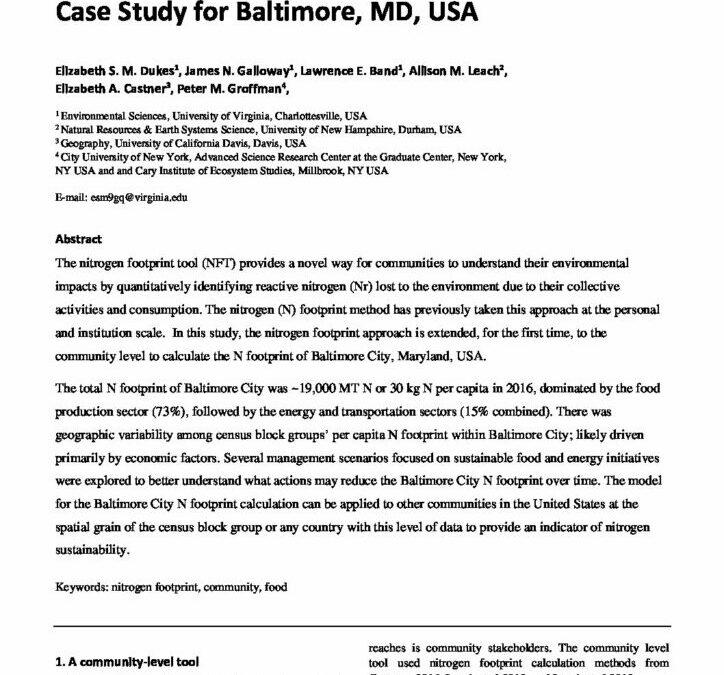A Nitrogen Footprint Tool for Communities: A Case Study for Baltimore, MD, USA

The nitrogen footprint tool (NFT) provides a novel way for communities to understand their environmental impacts by quantitatively identifying reactive nitrogen (Nr) lost to the environment due to their collective activities and consumption.
The nitrogen (N) footprint method has previously taken this approach at the personal and institution scale. In this study, the nitrogen footprint approach is extended, for the first time, to the community level to calculate the N footprint of Baltimore City, Maryland, USA. The total N footprint of Baltimore City was ~19,000 MT N or 30 kg N per capita in 2016, dominated by the food production sector (73%), followed by the energy and transportation sectors (15% combined). There was geographic variability among census block groups’ per capita N footprint within Baltimore City; likely driven primarily by economic factors. Several management scenarios focused on sustainable food and energy initiatives were explored to better understand what actions may reduce the Baltimore City N footprint over time. The model for the Baltimore City N footprint calculation can be applied to other communities in the United States at the spatial grain of the census block group or any country with this level of data to provide an indicator of nitrogen sustainability.
